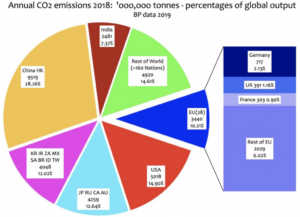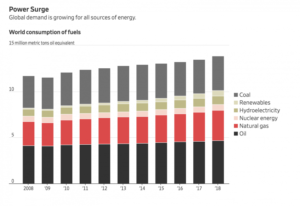by Ed. Hoskins, June 18, 2019 in GWPF
It is clear that CO2 emissions are continuing to grow incrementally in the Developing World. This should be anticipated to continue indefinitely.

2018 Global CO2 emissions
The following calculations and graphics are based on information on worldwide CO2 emissions published by BP in June 2019 for the period from 1965 up until the end of 2018.
The pie diagram above shows the proportion of CO2 emissions as of the end of 2018.
The previous post for the end of 2017 is available here
The data showing the progress of CO2 emissions by 2018 in the Developed and Developing worlds can be summarised as follows:
…













